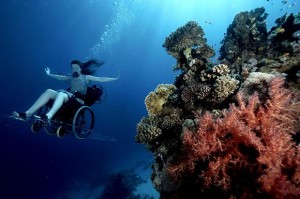In some parts of the world Christmas is well on the way, and shoppers are happily spending the bank’s money in shopping centres to buy presents for their loved ones.
In my family we have a different approach, and I would like readers to consider the model. It might possibly go some way to improving the welfare of many and the health of the global community at large.
The charity OXFAM offer a wonderful service called Oxfam Unwrapped. Why not buy a present for someone but have it delivered to someone who really needs it? I like this system, although I have some suggestions that I will make later.
So each year I buy my brother a set of school books for English language teaching through Oxfam. My brother speaks good English however, and so Oxfam send the books to a school in Malawi, where they serve a full class of bright and eager Malawian kids. My brother receives a card directly from Oxfam letting him know that his gift from me of 26 school books has been delivered by Santa to the school.
Everyone is happy.
The Unwrapped service offers all kinds of gifts, but I would stick to inanimate objects, project funding or education rather than live animals, although this is just a personal choice. The introduction of a live animal might cause problems to a family though (only my personal idea), as circumstances might not be ideal for their arrival.
I must admit that even living in affluent Cambridge Massachusetts, the arrival of a cow or even a couple of chickens or goats would not be too easy to manage, and I am sure that other situations exist that might not be improved, albeit through good will, by addition to the family. I am sure Oxfam know what they are doing though, they have been working in this field for many years.
Another possibility is to donate to research, projects or product development.
I like the idea of sending something to benefit others, and there are many ways of doing this. Just for a single example take a look at these coffee mugs. Each mug has the logo of the beneficiary printed on it, and 50% of the price is donated directly to the organizations.
Or donate to a project that is working to improve lives. The Liter of light project I wrote about earlier in the year is in need of funds, and there is another local project that is close to my heart that involves playing football (soccer).
A group of Harvard University students (women) had an idea a few years ago that has finally come to fruition. They have designed a football that can convert the energy created as it is being used into electric power. So the ball has a small socket within its cover, an inductive coil mechanism turns the kinetic energy into enough power to run a light for 3 hours after just 15 minutes of play.
After a full match the ref can charge his or her mobile phone.
Soccket, as the ball is called, is currently under trial in South Africa, and they could do with some advance orders to help its development. They are giving the balls away for free. You can buy one at the company website, and they will give it to someone on your behalf. They also have a skipping rope (jump rope) that works in the same way as the ball, so if football is not your sport of choice you can still join in the fun.
If we all diverted a portion of the money we spend this Christmas to projects whose goals are to improve lives, we could make a lot of difference. We could avoid battling other shoppers, buying needless things, creating thousands of tons of waste and modify an extremely wasteful and destructive economic system.
We could all do a little bit of good, and as William Shakespeare once said “How far that little candle throws his beams! So shines a good deed in a weary world”.


